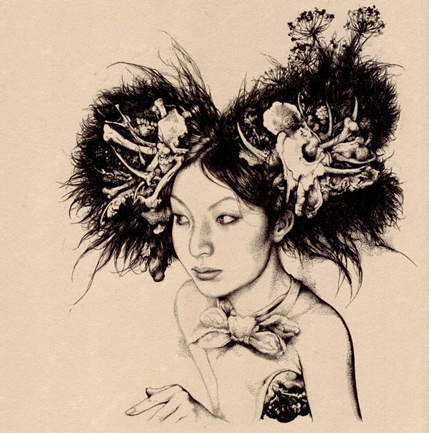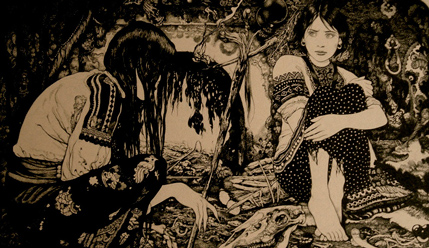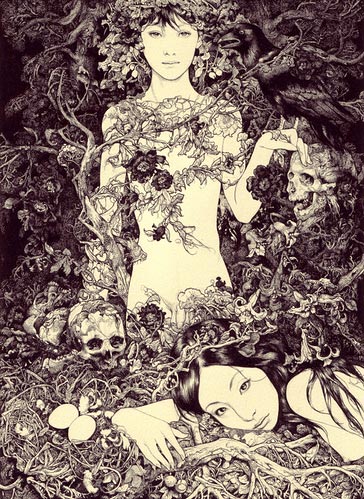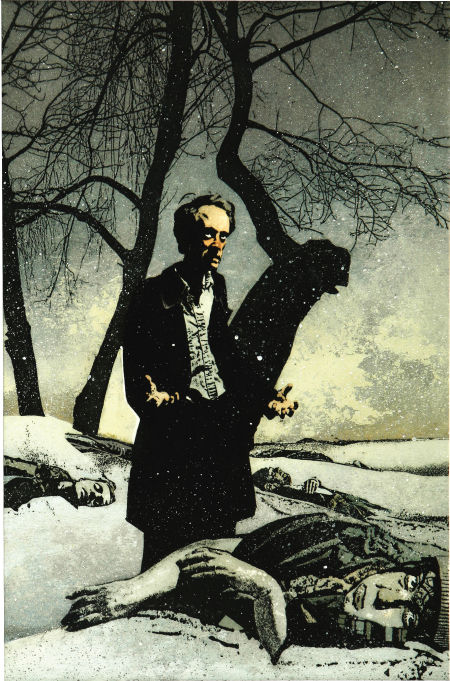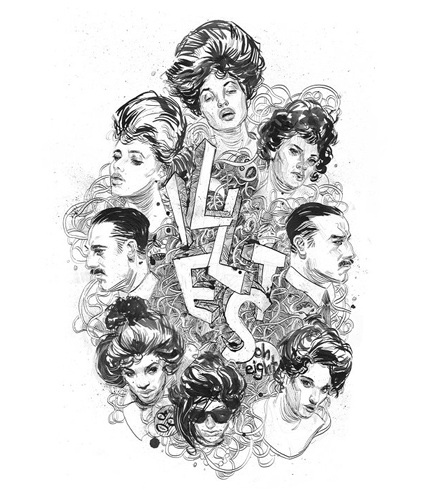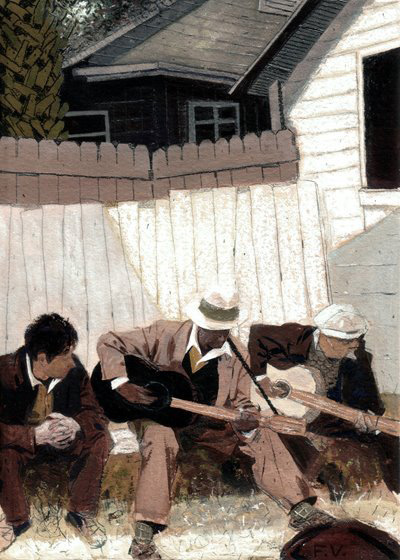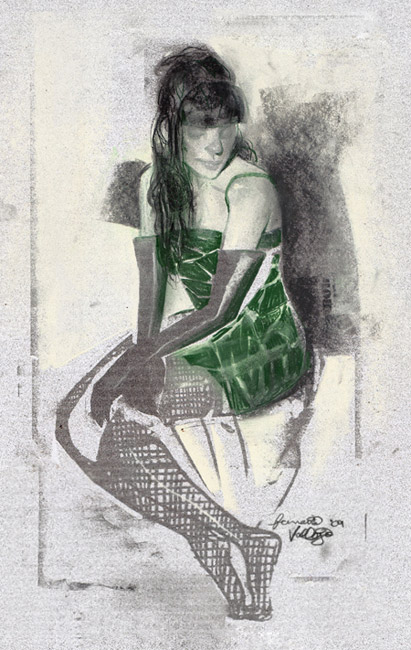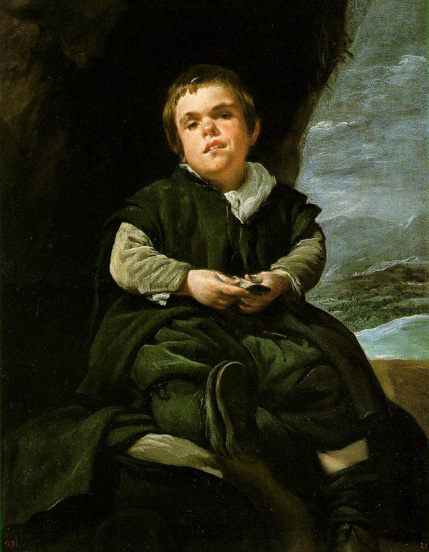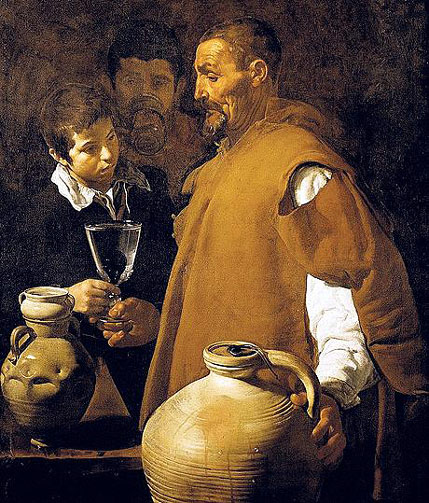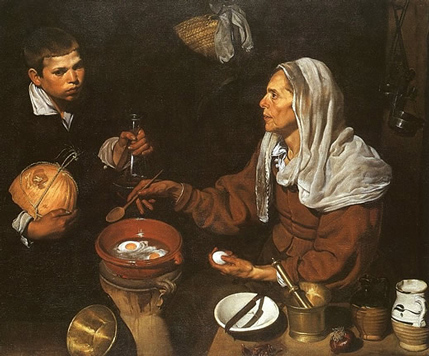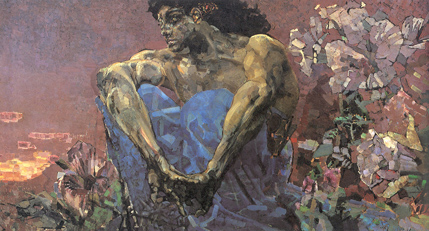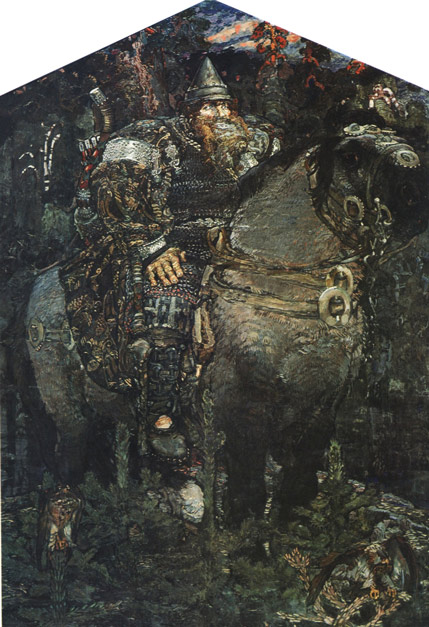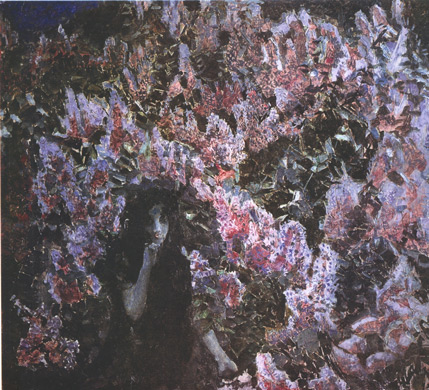As we near the end of our journey through the alphabet some of you may have noticed a slight itching in the back of your eyes. Maybe you’ve felt hunger pains, not in your belly, but at the midpoint of your head. That’s where your visual cortex is found and that hunger signals the beginning stages of art addiction. Other symptoms include a compulsive need to discover all the names of teachers and friends of a particular well-known artist, exploding bookcases due to the weight of too many art books, and a deep knowledge of auction houses and their scheduled public viewings. Lastly, hives.
Don’t worry, the addiction is relatively benign and plenty of support groups exist. Just remember, it’s a scavenger hunt which has no list and never ends.
Note: Click on images to see them larger and in much higher quality.
Vania Zouravliov
Delicate, dark and intricate define the graphic works of Russian illustrator Zouravilov. Dense pattern and texture set off the pale skin of languid women, who all seem weary or ignorant of the world that lurks just outside the picture’s edge.
![]()
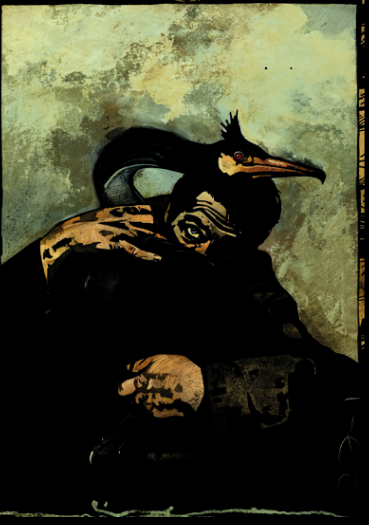

John Van Fleet
Classmates with George Pratt and Kent Williams, John Van Fleet was one of the first artists to successfully blend traditional and digital skills. The results were a distinct graphic style that’s graced an array of projects from comics to game illustration.
![]()
Francis Vallejo
A young yet incredibly accomplished draftsman, Francis seems blissfully entrenched in the cracks between realism and expressionism. A stylistic chameleon who’s constantly evolving, he remains an artist to watch.
![]()
Diego Velázquez
The demiurge with a brush, Velazquez stands amongst the greatest painters in all of Western art. HIs numerous royal portraits, historical and religious paintings track Velazquez’s development from hard-edged carravaggisti to his more mature atmospheric style. HIs selective detail, broad edge work and acute accuracy inspired countless artist from Sargent to Picasso.
![]()
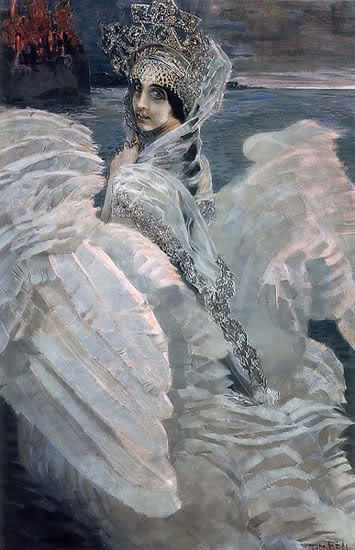
Mikhail Vrubel
Russia’s premier artist of the Symbolist movement. His distinctive choppy and roughly textured paintings stood outside the stylistic trends of his native art circles. His work expanded across painting, stage and costume design, as well as sculpture and stain glass.
C O L O P H O N
The elegant Spectrum was designed by Dutch typographer Jan van Krimpen in the 1940s. It was his last text face, and was released by the Monotype and Enschede type foundries in 1952.
We are Kurt Huggins and Zelda Devon. We live in a pocket-sized apartment in Brooklyn where we collect neat, weird things. Our home is abundant with books, old furniture, mismatching tea cups, and a cat named Cipher. We both illustrate stuff for money so we can continue to invent stories, buy shoelaces, watch puppet shows, and eat sandwiches.











